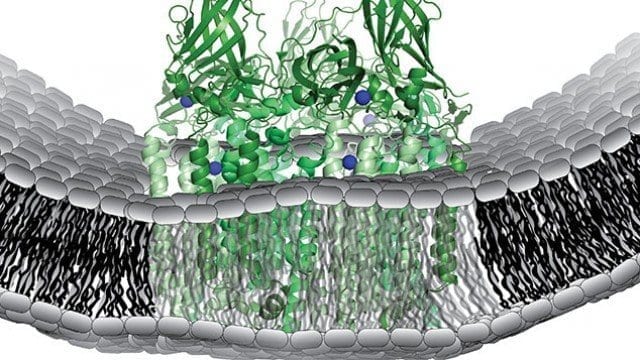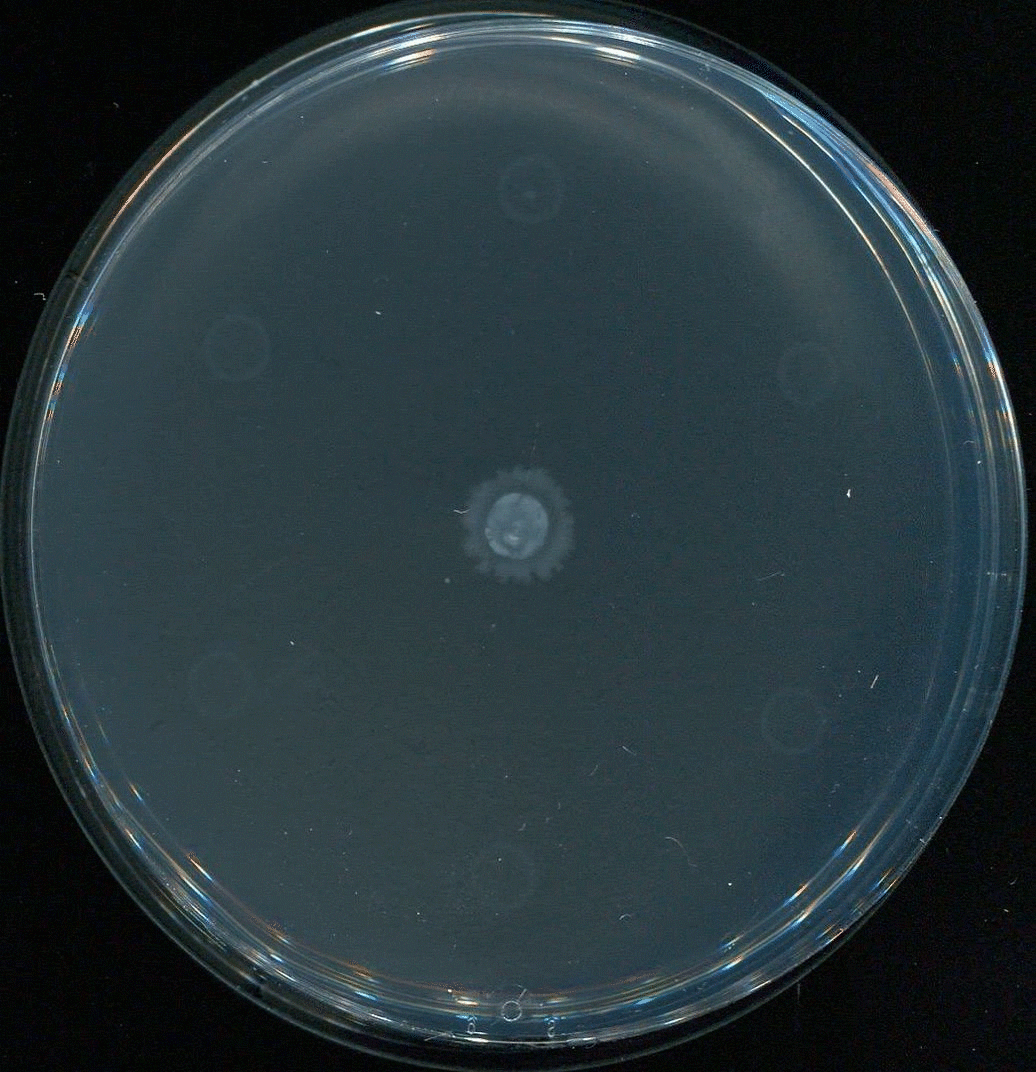
Discovery illuminates how bacteria turn methane gas into liquid methanol
Known for their ability to remove methane from the environment and convert it into a usable fuel, methanotrophic bacteria have long fascinated researchers. But how, exactly, these bacteria naturally perform such a complex reaction has been a mystery.
Now an interdisciplinary team at Northwestern University has found that the enzyme responsible for the methane-methanol conversion catalyzes this reaction at a site that contains just one copper ion.
This finding could lead to newly designed, human-made catalysts that can convert methane — a highly potent greenhouse gas — to readily usable methanol with the same effortless mechanism.
“The identity and structure of the metal ions responsible for catalysis have remained elusive for decades,” said Northwestern’s Amy C. Rosenzweig, co-senior author of the study. “Our study provides a major leap forward in understanding how bacteria perform methane-to-methanol conversion.”
“By identifying the type of copper center involved, we have laid the foundation for determining how nature carries out one of its most challenging reactions,” said Brian M. Hoffman, co-senior author.
The study will publish on Friday, May 10 in the journal Science. Rosenzweig is the Weinberg Family Distinguished Professor of Life Sciences in Northwestern’s Weinberg College of Arts and Sciences. Hoffman is the Charles E. and Emma H. Morrison Professor of Chemistry at Weinberg.
By oxidizing methane and converting it to methanol, methanotrophic bacteria (or “methanotrophs”) can pack a one-two punch. Not only are they removing a harmful greenhouse gas from the environment, they are also generating a readily usable, sustainable fuel for automobiles, electricity and more.
Current industrial processes to catalyze a methane-to-methanol reaction require tremendous pressure and extreme temperatures, reaching higher than 1,300 degrees Celsius. Methanotrophs, however, perform the reaction at room temperature and “for free.”
“While copper sites are known to catalyze methane-to-methanol conversion in human-made materials, methane-to-methanol catalysis at a monocopper site under ambient conditions is unprecedented,” said Matthew O. Ross, a graduate student co-advised by Rosenzweig and Hoffman and the paper’s first author. “If we can develop a complete understanding of how they perform this conversion at such mild conditions, we can optimize our own catalysts.”
Learn more: Methane-consuming bacteria could be the future of fuel
The Latest on: Methane-methanol conversion bacteria
[google_news title=”” keyword=”methane-methanol conversion” num_posts=”10″ blurb_length=”0″ show_thumb=”left”]
via Google News
The Latest on: Methane-methanol conversion
- Methane emissions from landfill could be turned into sustainable jet fuel in plasma chemistry leapon April 30, 2024 at 7:53 pm
Researchers have developed a chemical process using plasma that could create sustainable jet fuel from methane gas emitted from landfills, potentially creating a low-carbon aviation industry.
- Methane emissions from landfill could be turned into sustainable jet fuel with plasma-driven processon April 30, 2024 at 1:09 pm
In a world first, University of Sydney researchers have developed a chemical process using plasma that could create sustainable jet fuel from methane gas emitted from landfills, potentially creating a ...
- First keep steps firmly on the moonon April 28, 2024 at 4:03 pm
The moon serves as humanity's first stop and transit on way to the cosmos, and China is determined to keep each step firmly on the way. The author is vice-president of Aerospace Knowledge Magazine.
- China keeping each step firmly to the moonon April 28, 2024 at 2:09 am
Simulated solar radiation will help these processes to convert water and carbon dioxide into oxygen, hydrogen, methane and methanol. While oxygen is vital to human survival, hydrogen and methane are ...
- Catalyzing carbon and plastic recyclingon April 24, 2024 at 5:00 pm
Energy Solutions Forum speaker Karen Goldberg spoke about the methods her lab is pursuing to recycle carbon and plastic ...
- Red seaweed was billed as a gamechanger for livestock methane reduction… so when will it deliver?on April 23, 2024 at 9:33 am
Seaweed is the most promising tool in the enteric methane reduction toolkit, but there are challenges to growing it at scale says FutureFeed.
- FMI Study Predicts Global Power-to-X Market Surging Towards US$ 484 Million Valuation by 2033, Driving an Impressive Growth of 9.8% CAGRon April 18, 2024 at 7:06 am
The power-to-X market foresees a notable Compound Annual Growth Rate (CAGR) of 9.8% from 2023 to 2033, with aspirations to surpass US$ 484 million by 2033 from a valuation of US$ 190 million in 2023.
- Research lights up process for turning CO₂ into sustainable fuelon March 25, 2024 at 5:10 pm
Researchers have successfully transformed CO2 into methanol by shining sunlight on single atoms of copper deposited on a light-activated material, a discovery that paves the way for creating new green ...
via Bing News










